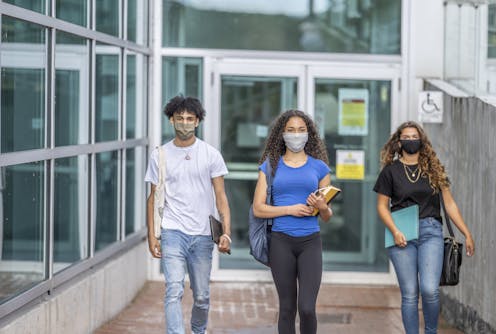Ethnic diversity on campus helps break down stereotypes
- Written by Miguel R. Ramos, Assistant professor, University of Birmingham

The Research Brief[1] is a short take about interesting academic work.
The big idea
When students attend ethnically diverse colleges, their enriched experience transforms how they view different ethnic groups and better prepares them for life and work in 21st century America.
This finding[2] is based on the responses of nearly 4,000 students from 28 U.S. colleges who completed annual surveys between 1999 and 2004 about their views of overall ethnic diversity at their schools, specific ethnic groups and their own well-being.
More diversity makes students see ethnic groups as being basically the same when it comes to warmth and competence – two major dimensions of group stereotypes[3]. That is, the more diverse a campus is, the more likely students perceive Asians, Latinos, Blacks and whites as similarly trustworthy and similarly intelligent, rather than as stereotypically different.
When students see similarities across groups, it’s associated with higher satisfaction with college life. Conversely, those who attended colleges where most students had the same ethnic background were more likely to keep the stereotypical views they had before college, and were less happy with their lives.
When stereotypes fall by the wayside, students can see more common ground than divisions.
Why it matters
The U.S. Census Bureau projects that by 2045, whites will no longer be the majority in the U.S.[4].
In higher education, between 1997 and 2017, the share of non-white college students increased from 28% to 45%[5]. However, interacting with people of different backgrounds can be difficult at first. The tensions, according to what people report, make them more dissatisfied with their lives. Individuals do get used to diversity, but data from countries around the world show that adaptation takes between six and eight years[6]. When people adjust to increased diversity, their life satisfaction recovers – and there should be initial signs of this during the four years students spend at college.
Stereotypes play a major role in how people see diversity. Some ethnic groups are stereotyped as warmer socially, while others are seen as more competent or intelligent. For example[7], Asian students tend to be seen as competent and not so warm, and Black students as warm but not so competent. When students think about ethnic groups as differing a lot along these dimensions, getting along is harder. Alternatively, if students come to see other ethnicities as basically similar, finding common ground is easier.
Diverse environments encourage people to reject stereotypes. Diversity allows people to start seeing others as individuals and to notice that people within each ethnic group vary a lot, some warm, some not so warm; some smart, some not so smart. Such variability shows that groups overlap a lot. Living in diverse campuses make students rely less on stereotypes and see groups as more similar to each other. Studying how these processes unfold is critical to understanding how individuals adapt to diversity and how our country can best develop everyone’s talent and ability to work together.
[Deep knowledge, daily. Sign up for The Conversation’s newsletter[8].]
What still isn’t known
The psychology behind how stereotypes fade away is not fully understood. It might require repeated exposure to different groups, or working together on the same team, which makes people from different groups less like strangers. That is to say, the more individuals are exposed to people from different groups, the more they should see them as familiar, similar and acceptable.
What’s next
The three of us[9] are now designing experiments to understand why stereotypes about different groups diminish when people live, work and learn in diverse environments. Understanding how people adapt to changes in ethnic diversity is a key challenge in the 21st century.
References
- ^ Research Brief (theconversation.com)
- ^ This finding (www.pnas.org)
- ^ two major dimensions of group stereotypes (psycnet.apa.org)
- ^ whites will no longer be the majority in the U.S. (www.census.gov)
- ^ non-white college students increased from 28% to 45% (www.pewresearch.org)
- ^ adaptation takes between six and eight years (www.pnas.org)
- ^ For example (doi.org)
- ^ Sign up for The Conversation’s newsletter (theconversation.com)
- ^ The three of us (www.fiskelab.org)
Authors: Miguel R. Ramos, Assistant professor, University of Birmingham
Read more https://theconversation.com/ethnic-diversity-on-campus-helps-break-down-stereotypes-142122

